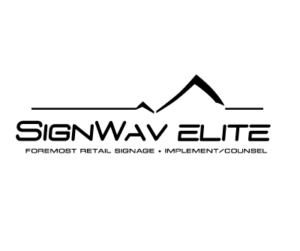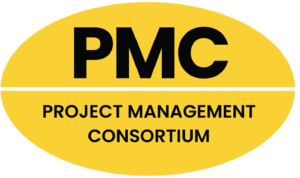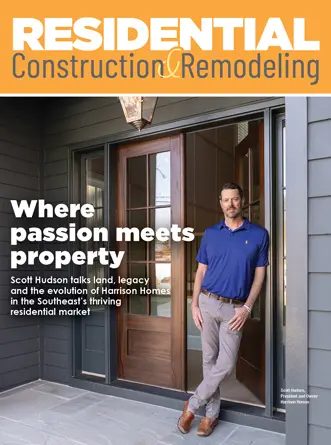 When the local community views you as the place where hope lives, you know the work you do is important. That is the mindset officials at St. Barnabas Hospital employed when they decided to approach construction upgrades and improvements for the 422-bed, not-for-profit, nonsectarian, acute care community hospital and Level 2 Trauma Center in the Bronx, New York. The facility is authorized to treat the most critically ill and severely injured patients.
When the local community views you as the place where hope lives, you know the work you do is important. That is the mindset officials at St. Barnabas Hospital employed when they decided to approach construction upgrades and improvements for the 422-bed, not-for-profit, nonsectarian, acute care community hospital and Level 2 Trauma Center in the Bronx, New York. The facility is authorized to treat the most critically ill and severely injured patients.
For nearly a decade, Central Consulting & Contracting has been responsible for the work at St. Barnabas, along the way becoming an integral part of its construction team. Projects have included the hospital’s freestanding Steam Plant, nursing home, PET CT Scan Suite, Ambulatory Surgery Department, pharmacy relocation, main entrances and parking garage.
Central Consulting’s latest project is the Bronx Center for a Healthy Community, which was completed Sept. 1. The 52,000-square-foot space, a new building across from the main campus, is home for an urgent care center; women’s clinic, infant and children’s clinic, mammography and ultrasound screening center, a gym and exercise classrooms. It also features a complete commercial kitchen for teaching the community a healthy cooking and eating lifestyle.
Central Consulting worked with the hospital and its consultants through pre-construction as well as with the developer for the turnover of the space. Central managed MBE-WBE goals, scheduling, budget, constructability and value engineering. The Central team also had to navigate challenges and delays due to COVID-19.
Leading the team was Central president and CEO Richard Simone, who has more than 35 years’ experience in the construction industry. The New York and Florida-based full-service construction management and general contracting company specializes in the development of healthcare facilities and is a Certified Healthcare Constructor as recognized by the American Hospital Association. It also works with many major healthcare systems across the east coast.
We sat down with him to scope out Central’s work on the St. Barnabas facility.
Tell us a little about St. Barnabas Hospital.
St. Barnabas Hospital (SBH) is a 422-bed, not-for-profit, nonsectarian, acute care “safety net” community hospital and Level 2 Trauma Center authorized to treat the most critically-ill and severely injured patients. The SBH Health System family is committed to serving the Bronx community and ensuring patients get the best possible care. Their goal is for the community to get healthy and stay healthy, regardless of ability to pay.
Give us a snapshot of the Bronx Center for a Healthy Community project.
The Bronx Center for a Healthy Community is a new health and wellness center with a pediatric clinic, women’s clinic, women’s imaging center, urgent care, a gym, exercise rooms, a teaching kitchen, and a roof-top garden for farm-to-table cooking and recipes. Patients and community members can take healthy cooking classes, learn how to manage weight concerns, learn how to grow fruits and vegetables, and maintain healthy lifestyles with proper diet and exercise. The project will help the Bronx community for generations to come. We are proud to have been given the opportunity to be part of it.
At the peak in New York City, getting personal protection equipment (PPE) for our employees and tradesman was difficult. At one point, we had a full-time person assigned to finding hand sanitizer and masks.
What were the goals of the project? How did they change when the pandemic hit?
The goals of the project were to provide a state-of-the-art health and wellness center for the community. Teaching patients to be healthy, eat healthily and reduce hospital visits long-term by living healthier and making healthy choices. The lifestyle changes will help reduce obesity, diabetes, heart disease, and many other conditions. The overall project goals did not change as a result of the pandemic, but completion was delayed.
Tell us about the immediacy of the construction deadline. How did that factor into the planning?
Many things were quickly out of our control due to COVID-19, limiting our ability to commit to deadlines. Each day, during the peak period in New York City, various aspects of the project had to get pushed back, due to manpower and supply chain issues. We had 25 carpenters on site as we entered the peak, and within 2 days we were down to five.
Many of the supply chain issues were directly related to materials on our critical path, which directly impacted our schedule. As an example, there were crucial components that needed to be installed by suppliers from states that had travel bans to and from New York, and some vendors simply could not send installers to the city. We continued to find work-arounds and developed a plan to quickly react to all our critical path tasks as soon as restrictions lifted. As a result, we had to complete many tasks out of sequence.
What goes into enacting a design and construction plan at that pace?
Teamwork with an all-hands-on-deck approach was imperative in facilitating the plans. We have been very fortunate to have a great owner, owner’s representative, architectural team, trade contractors, and dedicated employees managing the project, all working together for a common goal. Through all of this, the project team proved to be one of the best I have ever worked with.
What were some of the challenges?
We were very intentional about keeping workers safe and making them feel safe. Getting workers who were willing to work was challenging because many have young children, pregnant wives, and elderly parents who live with them, and they were mostly concerned about their loved ones.
In some areas, our supply chain saw severe impacts, as many manufacturing facilities had to close for some time, or their supply chain was interrupted, which affected their ability to complete orders.
At the peak in New York City, getting personal protection equipment (PPE) for our employees and tradesman was difficult. At one point, we had a full-time person assigned to finding hand sanitizer and masks. The suppliers who had any inventory were rationing what we could get.
What special precautions (protocols) were put into place?
At all our sites, we have implemented information and educational signage, social distancing, temperature checks, sanitation stations, ingress point and delivery entrance restrictions, contact tracing logs and cleaning logs. We also ensure frequent cleaning of high-touch surfaces and restroom areas, discourage tool sharing, and limit the number of workers on elevators. Of course, we have mandated masks and insist that if anyone feels sick, they must stay home.
I expect we will see a COVID-19 or pandemic hospital design, whereby a hospital will quickly triage and separate patients based on their symptoms.
How much of these protocols will become permanent moving forward?
I think sanitation stations, frequent cleaning of high-touch surfaces, mask-wearing, informational and educational signage, and insisting if a person is not feeling well they must stay home will be in our lives for some time to come.
How does the overall design of the center cater to what the facility managers were looking for?
NK Architects are to credit for the fantastic design of the center. I believe they hit the mark on all accounts and exceeded the facility managers’ expectations. As in every project, there were some value engineering compromises at the beginning to meet the budget. However, during construction we were able to include some client requested changes and put back in some of the items we previously value engineered out.
What kind of conversations about the “new normal” are you having with your customers? Employees?
Wow. I have this conversation daily. It is changing and will continue to change. I reassure my clients that we will stay on top of the changes and in front of them when possible. We will remain nimble and flexible and implement every precaution to protect our employees’ health and well-being, our clients’ employees, their patients and visitors.
With everything going on today, what is your short-term strategy as a firm? Long-term?
Our short-term strategy is to serve our clients, complete our current projects, and protect our tradesmen and employees to the best of our ability, no matter the cost.
I am optimistic about the long-term. I believe the healthcare industry will bounce back quickly and stronger. As such, we will stay the course and look for opportunities and new market areas for expansion. We also plan to continue with our expansion plans to Florida, which we were working on pre-COVID.
What is the best piece of advice you can offer to other firms on how to deal with what is happening right now?
In my opinion, stay with what you know best and trust in what you do. We have been through other economic downturns and other seemingly devasting events, like 9/11. We have always come back, and we will continue to come back. Failure is not an option.
Give us a rundown of what you are seeing in the healthcare construction industry.
I am seeing many health systems taking a step back to reevaluate their capital projects and downsize some of their immediate plans. Healthcare systems have stepped up to help our nation get through this pandemic, regardless of the cost. I cannot think of any other sector that is required to help the nation through this crisis, despite the financial impact they may suffer. This same determination will help them thrive going forward.
What is the biggest issue today related to construction?
I believe a major issue we are facing in construction is limited interest from younger people to learn the trade. In many instances, those who would be interested are being steered to other career paths because being a tradesman is not what most parents want for their children. The few who are going into the business are learning it on paper with no real field experience. Construction is still a “start at the bottom and learn your way to the top” business, and most younger folks do not seem to be willing to put in the time.
Talk about the continued importance of sustainability today. What are you doing?
Sustainability is very important. If we could all cut our carbon footprint by some percentage, it would help tremendously. When our firm leads the design team on design-build projects, we work with the owner to implement sustainability via HVAC systems, lighting, and finish materials. Healthcare facilities and hospitals are some of the top energy consumers. Most infrastructure is running 24/7/365, so making good choices on equipment that gets the job done and conserves as much energy as possible is paramount.
Many health systems have an energy manager primarily focused on reducing energy consumption, which helps the bottom line, but also helps reduce their carbon footprint. It is a win-win. Construction projects generate an astonishing percentage of the waste that goes to landfills, so we try to cut down on the amount of waste we send to landfills as well. We try to fabricate components off-site whenever possible, which cuts down on waste.
To this end, we recently entered into a joint venture agreement with a modular manufacturer and can now offer our clients complete modular solutions when appropriate.
What type of opportunities do you see moving ahead?
I am optimistic. I see us moving beyond this and being better than before. I do not know what the opportunities will be, but I am confident that we will be able to react to them when they present themselves.
I expect we will see a COVID-19 or pandemic hospital design, whereby a hospital will quickly triage and separate patients based on their symptoms.
What are some of the things you expect to see if and when we get back to any type of normalcy?
I expect we will see a COVID-19 or pandemic hospital design, whereby a hospital will quickly triage and separate patients based on their symptoms. I am not a healthcare administrator, but logically, if you have a highly contagious patient, you don’t want that patient in the middle of your emergency department sitting next to someone with a broken finger. I also foresee more flexibility in room designs in order to quickly convert them to ICU and isolation beds as needed.
On the infrastructure side, I see systems looking to upgrade their medical gas infrastructure, specifically the oxygen systems, storage, and distribution and expect more will soon. Also, HVAC system designs that lend flexibility to making spaces more negative or positive will potentially be required on a moment’s notice. In fact, we are currently working with a couple of hospitals to incorporate these changes/upgrades.
Another expectation I have is that more health systems serving rural communities will build a network to have more available healthcare on a smaller scale immediate to their patients: the micro-hospital model. The micro-hospital model would also reduce the stress on systems’ base hospitals during events like COVID-19.
From what you are seeing out there now, how would you say the industry is handling construction in this new landscape?
From what I see, the overall industry has done a great job with the new landscape by using technology to manage and implement new COVID-19 standards. For an industry that is always been hands-on and had to meet in the field, we have very quickly implemented video conferencing, virtual punch lists and site visits. It is pretty amazing.
What should we expect to see six, 12 months down the road?
Expect to see more changes, as this is all new. Even the world’s smartest scientists have not yet come up with the right formula. As case numbers in some areas continue to rise, and we have hard data about what works and what does not, things will change, and we will continue adapting to the “new normal.” I think public places are going to have to look at their HVAC systems and filtration methods.
_____________________________________________________________
Story by Michael J. Pallerino, editor of Commercial Construction & Renovation magazine. Over the past 30-plus years, he has won numerous awards, including the “Jesse H. Neal Editorial Achievement Award,” recognized as the Pulitzer Prize for business-to-business magazines. He can be reached at mikep@ccr-mag.com.
_____________________________________________________________

One-on-One with…
Richard Simone, President & CEO, Central Consulting & Contracting
Describe a typical day.
Pre-COVD-19 was very different from today. However, I try to keep my schedule and interactions with clients, partners, and employees as normal as possible.
Typically, I am at my desk by 6 a.m. I am very hands-on, so I like to stay up to speed on all our projects. I usually make a round of calls early, often speaking with project staff during their drive to work to get updates. Then, most days, I have scheduled conference calls and video calls. I focus on strategic planning, new business, in-house estimates, and financial updates throughout the day.
Above all else, I am a construction guy, and I love building, so I visit sites as much as possible. Since the pandemic, I have cut back on visits.
What is the biggest item on your to-do list right now?
To continue to provide excellent service for our client base and find new opportunities.
What is the most rewarding part of your job?
Building great projects for great clients, knowing I have a great group of talented and dedicated employees behind me, and some of our projects leaving a legacy are very rewarding. Most importantly, many of my clients and business associates, from engineers to architects to sub-contractors, have become lifelong friends. I am blessed to have many 30-plus year relationships.
What was the best advice you ever received?
I have received plenty of great advice over the years. If I had to pick one, it would be when I was very young and playing ice hockey, struggling because I was not the most talented player on the team.
My oldest brother, a great baseball player himself, told me once: “What you lack in talent, you have to make up in hustle and desire.” I went on to become captain of that team even though I was never the most talented. This is true in all aspects of life and business; hard work and determination always pay off.
What is the best thing a client ever said to you?
“You got the job.” On a serious note, sometimes it is not what they say, it is what they do. I have had two clients—one is St. Barnabas Hospital—honor me at their annual Gala, which does not often happen for contractors. To me, knowing our clients trust us to always do the right thing for them, no matter what, is very satisfying.
One of the best things a client has ever said to me was an unexpected compliment. When he was about to introduce me to his boss, before the meeting, he said, “You will get along great; he’s stupid smart like you.”
How do you like to spend your downtime?
I love to golf. It is my addiction. I also like doing projects at my home. (As background, I started as a carpenter more years ago than I care to remember). I tend to spend most of my downtime being active.






























